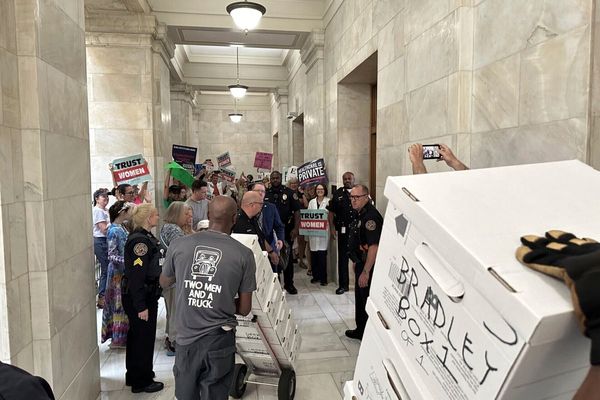As sunlight streams through rainforest trees, Lauren and James Archer splash in a creek with their young children.
It's a typical day at their off-grid property in the hills of Upper Lansdowne on the New South Wales Mid North Coast.
The Archers made a tree change from western Sydney about six years ago and, despite some significant challenges during flooding, they haven't looked back.
They are now a family of five with another on the way.
"I wouldn't move away in a heartbeat … the pressure of living in a city wasn't mentally healthy for me," Mr Archer said.
Ms Archer says their life has fewer modern comforts but "a lot more freedom".
"The benefits do outweigh anything else … it's just a cheaper lifestyle, it's more rewarding.
"Just watching the kids grow out here, their little imaginations."
The day the floods came
Their lifestyle, though, hasn't always been idyllic and at times has been outright dangerous.
During severe flooding across the region in March 2021, the creeks around the family's property transformed into raging torrents that washed out bridges on the 4WD access road to their home.
The Archers became isolated for days and were left without power or phone network coverage.
"It was as scary as it gets out here," Mr Archer said.
On the fourth day, the family set out on foot to reach their neighbour's home on the other side of Upper Lansdowne, carrying their youngest, Liam, who was only three months old.
The other children, Jack and Kai, then aged four and two, walked as much as they could.
"It was scary walking out … we turned it into an adventure, so it wasn't too scary," Ms Archer said.
Learning to live with floods
After the floods, Ms Archer and the children temporarily moved elsewhere while Mr Archer set to work making repairs to the cabin, removing mould, and restoring the bridges on their access road.
"The log bridge [at one creek crossing] is now around the corner in sticks … it must have been just such a huge force that punched it out," he said.
Mr Archer laid pipes down and pushed dirt across them to make temporary bridges.
In March this year, those bridges were again washed out during another severe rainfall and flooding event.
Mr Archer says rebuilding them is an ongoing issue and he has plans to erect larger, sturdier timber structures in the coming months.
"We learnt from the floods we need better infrastructure to be able to live safely out here."
How to live off-grid
Mr Archer says living off-grid has been a constant learning process and, for him, the challenges form part of the adventure.
The family relies on solar energy and water from rainfall and their creeks.
Mr Archer also runs a timber works and carpentry business to help fund their living costs and the expenses involved in maintaining bridges.
Their eldest child attends a small school at the nearest town — it's not too far away, although the drive in can sometimes be treacherous after heavy rainfall.
"You don't know what skills you need when you get here … it became obvious carpentry was ahead of all the skills so I could build a proper house for my family," Mr Archer said.
Ms Archer says learning to rely on solar energy has been one of her biggest challenges.
"I used to wash at night but now have to focus on where the sunlight is, where it is on the panels … how much do we have left in the batteries … we don't have a microwave, we don't have a toaster.
Sights set high
The family have their sights set on building on a clearing high on their large property and hope to start work later this year.
"We are trying to build the bigger family home instead of fixing every detail on this cabin … we are trying to move on to bigger things," Ms Archer said.
The threat of floods and bushfires remain, but the Archers say it's worth all the effort.
"We love being amongst nature, among the rainforest, the birds, the creek … it's a simple life but it has become a better life for us," Mr Archer said.







